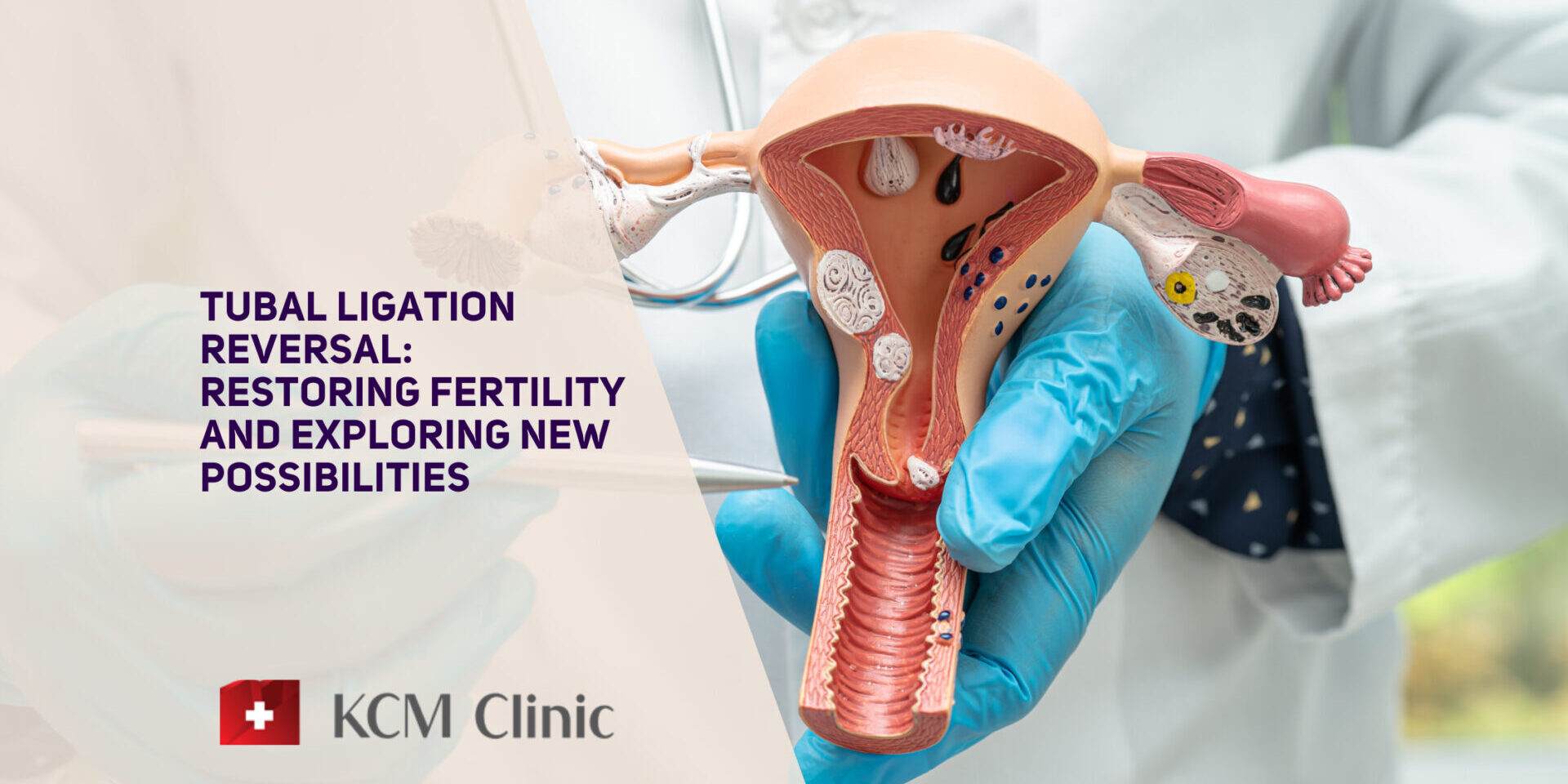Tubal ligation, a common method of permanent birth control, provides individuals with the ability to prevent future pregnancies. However, life circumstances can change, and some individuals may desire to restore their fertility after undergoing tubal ligation. Tubal ligation reversal, also known as tubal reanastomosis, offers a potential solution by reconnecting the fallopian tubes, allowing the possibility of natural conception. In this article, we will explore the procedure of tubal ligation reversal, the reasons why individuals choose to undergo it, factors that can affect the outcome, recovery times, and success rates.
What is tubal ligation reversal?
Tubal ligation reversal is a surgical procedure that involves reconnecting the fallopian tubes to restore the natural flow of eggs and sperm. The procedure is also called ‘having your tubes tied’, although this definition does not correspond to what the procedure actually entails.
Tubal ligation reversal is typically performed under general anaesthesia. There are two main techniques: tubal anastomosis and microsurgical procedures. Tubal anastomosis involves removing the blocked portion of the fallopian tube and rejoining the healthy segments. Microsurgical procedures utilise magnification to ensure precise reconnection of the fallopian tube segments. The choice of technique depends on factors such as the type of tubal ligation performed and the individual’s specific circumstances. At KCM Clinic, we offer microsurgical procedures, and tubal ligation reversal is performed laparoscopically. This means that surgery is minimally invasive, ensuring faster recovery and fewer complications.
Why undergo tubal ligation reversal?
Individuals choose to undergo tubal ligation reversal for various reasons. Some experience a change in their life circumstances, such as remarriage or a desire to expand their family. Others may have regrets about their decision to undergo tubal ligation and wish to restore their fertility. Tubal ligation reversal provides an opportunity for these individuals to pursue their dream of conceiving naturally and experiencing the joys of parenthood once again.
What are the factors affecting the outcome of tubal ligation reversal?
There are different circumstances that can affect the outcomes of a tubal ligation reversal. We are going to give you an overview below.
Type of tubal ligation
The type of tubal ligation procedure initially performed can influence the success of tubal ligation reversal. Some methods, such as tubal rings or clips, are more amenable to reversal as they involve less damage to the fallopian tubes. Procedures like electrocautery or tubal coagulation, which involve burning or sealing the tubes, may pose more challenges for successful reconnection.
Length of remaining fallopian tube segments
The length and health of the remaining fallopian tube segments also play a role in the success of tubal ligation reversal. Longer, healthy segments provide better opportunities for successful reconnection and subsequent pregnancy.
Age and fertility factors
Age can impact fertility and the success of tubal ligation reversal. Younger individuals generally have higher success rates and better overall fertility. Other factors, such as the presence of additional fertility issues, like endometriosis or male factor infertility, can also affect the outcome. It is important for individuals considering tubal ligation reversal to undergo thorough fertility evaluations to assess their overall reproductive health before undergoing the procedure.
Recovery time and post-operative care after tubal ligation reversal
Hospital stay
Following tubal ligation reversal, individuals typically spend a day or two in the hospital for monitoring and initial recovery. The surgical incisions are closed with dissolvable stitches or sutures.
Post-operative discomfort and pain management
Pain and discomfort following tubal ligation reversal are normal and can be managed with prescribed pain medications. Applying ice packs and resting in a comfortable position can also help alleviate discomfort.
Activity restrictions and follow-up care
During the recovery period, individuals are advised to avoid strenuous activities, heavy lifting, and sexual intercourse for a specific duration as recommended by their healthcare provider. Regular follow-up appointments will be scheduled to monitor the healing process and assess fertility progress.
What are the success rates of tubal ligation reversal?
Overall success rates
The success rates of tubal ligation reversal vary depending on several factors, including the individual’s age, the type of tubal ligation performed, the length of the remaining fallopian tube segments, and overall fertility health. On average, the success rates range from 40% to 80%, with higher success rates seen in younger individuals and those with longer healthy tube segments.
Time to pregnancy
Achieving pregnancy following tubal ligation reversal may take time. Some individuals conceive within a few months, while others may require up to a year or more. It is important to remain patient and consult with a fertility specialist if pregnancy does not occur within a reasonable timeframe.
Are you considering a tubal ligation reversal?
Tubal ligation reversal offers individuals the possibility of restoring their fertility and realising their dream of conceiving naturally. By understanding the procedure, reasons for choosing tubal ligation reversal, factors affecting the outcome, recovery times, and success rates, individuals can make informed decisions and embark on their journey towards parenthood with optimism and hope. It is crucial to consult with experienced healthcare professionals and fertility specialists who can provide personalised guidance and support throughout the process. With patience, appropriate care, and a positive mindset, tubal ligation reversal can be a transformative step towards embracing new beginnings and the joys of parenthood.
If you’re considering a tubal ligation reversal, get in touch with us! Our team of specialised doctors and nurses are here to help. KCM Clinic specialises in catering to international patients with convenient treatment packages, hotel booking and pick-ups to and from the airport or the train station.








